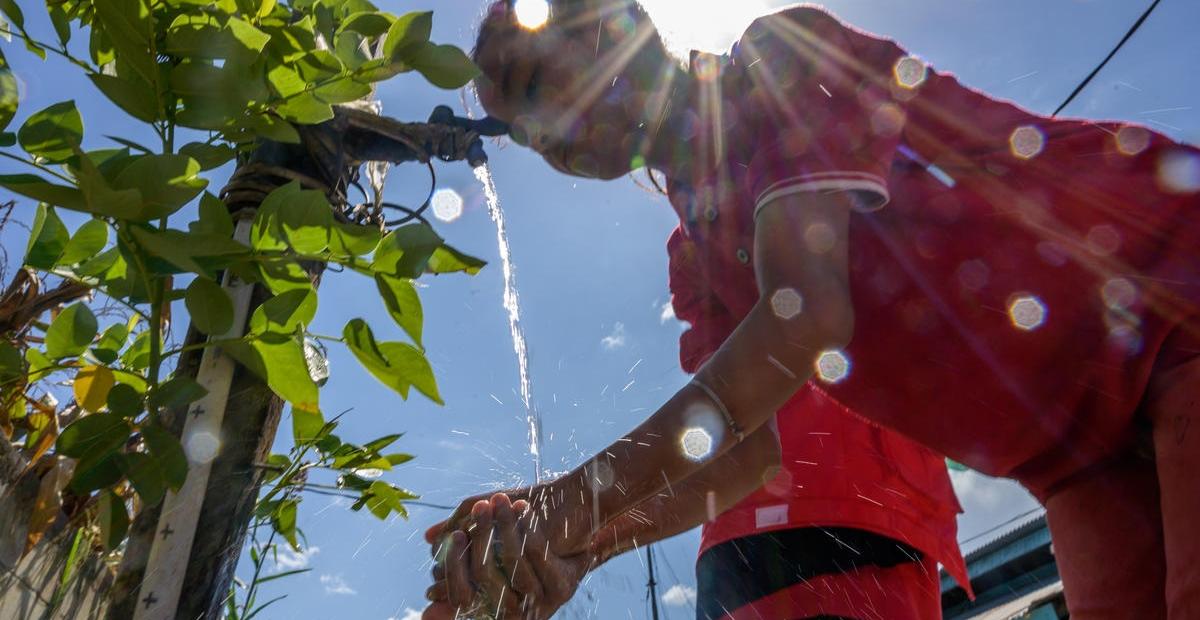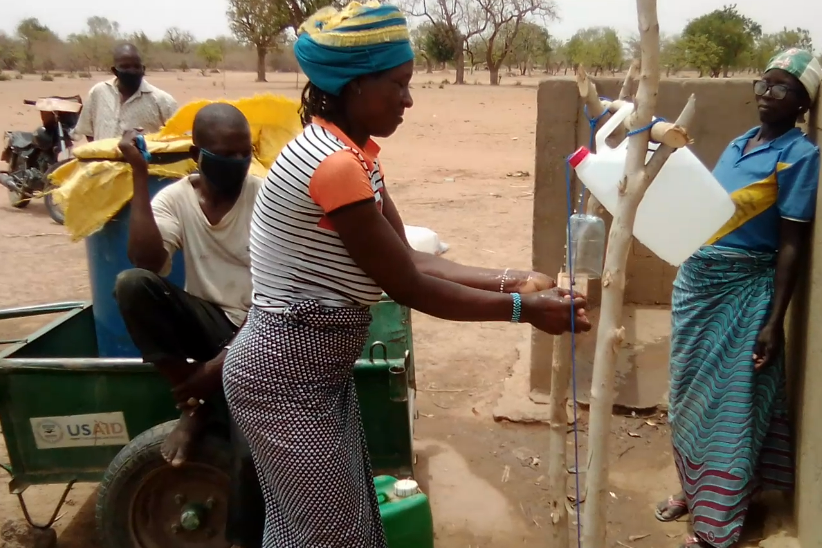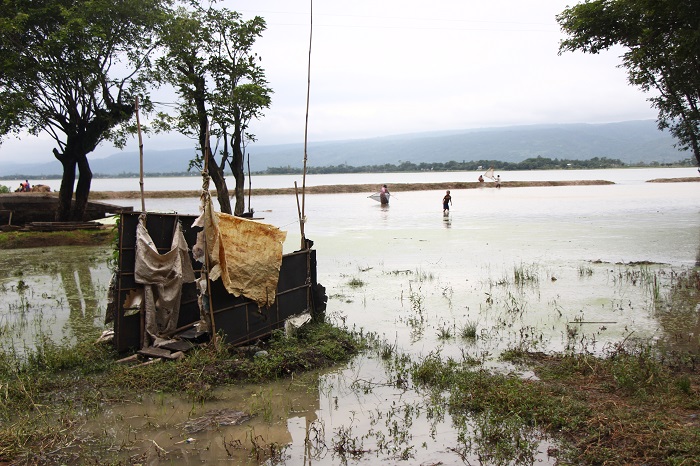What a year of COVID has taught us about the value of water
Authored by Nicole Weber, PRO-WASH

Read this blog in French here.
Introduction
Today we celebrate World Water Day under the theme Valuing Water. The timing is appropriate. Just recently, we somberly observed the one-year mark of the COVID-19 pandemic declaration, and I think we all feel the value of water more than ever. A full year of intense handwashing, cleaning, and disinfection in our homes, workplaces, and healthcare settings has taught us all – as individuals, households, and communities – the critical role water plays in the fight against infectious diseases, such as COVID-19. At the same time, the pandemic itself has put at risk some of the gains made in previous years towards the Sustainable Development Goal (SDG) 6: Clean Water and Sanitation for All. As the pandemic paralyzed much of the world, food security activities were put on hold as well, including key WASH (water, sanitation, and hygiene) interventions. But not for long. Activities quickly found their footing again and came up with adaptations that made it possible to both continue pushing towards SDG 6 and respond to prevent and mitigate the effects of COVID-19.
In this blog, we will look at how three activities, all funded by the USAID Bureau for Humanitarian Assistance, supported community WASH activities that resulted in greater resilience to prepare for and respond to major shocks such as COVID-19. Join me to learn how the Victory Against Malnutrition Plus (ViMPlus) activity in Burkina Faso used existing platforms and relationships to rapidly ramp up social and behavior change activities to respond to COVID-19. In Zimbabwe, the Amalima activity finalized a study on understanding how lending, savings, and income-generating activities, combined with hygiene and sanitation promotion, can help move the mark on ending open defecation. Lastly, learn how SHOUHARDO III used human-centered design and market-based approaches to improve sanitation coverage in Bangladesh.
All three activities presented their findings and adaptations at the recent Colorado WASH Symposium. You will find links to all presentation materials throughout this blog.
Burkina Faso: Pivoting WASH Activities to Respond to COVID-19

Following the first confirmed case in the country on March 9, 2020, the ViMPlus activity rapidly modified programming to support the government’s COVID-19 response, primarily through adapting and increasing WASH behavior change activities.
Collaborating closely with the government and community actors, VimPlus utilized existing platforms, including mother leader groups, radio campaigns, and Water User Associations to support community members to adopt and strengthen key behaviors like handwashing, social distancing, mask-wearing, food hygiene and nutrition, and continuing exclusive breastfeeding. As COVID-19 was a new threat, interactive question-and-answer sessions were critical in dispelling common myths and ensuring accurate information was widely available. Water Users Associations set up hand-washing stations at each water point and held demonstration sessions on building handwashing stations using locally available materials.
Following the demonstrations, community members made at least 1,000 local handwashing stations with their own funds. Six months after handwashing demonstrations, over 94% of the stations are being used for regular handwashing with soap and water. There was also an increase in households with a handwashing station that has soap and water.
Throughout the pandemic response, there has been a focus on the safety and protection of staff, volunteers, and community members through access to hygiene products and following hygiene guidance including social distancing and mask-wearing.
Zimbabwe: Does integrating savings, lending, and income-generating activities improve the uptake of latrines?
In Zimbabwe, previous WASH programming under Amalima strengthened WASH infrastructure and social cohesion, which prepared vulnerable households to practice hygiene behaviors but also be more resilient to the impacts of COVID-19. The Amalima activity promoted hygiene and sanitation through the Community Health Clubs (CHCs), a cost-effective and participatory approach that supports the uptake of key WASH behaviors. Together, club members complete a curriculum over a few months and must make certain hygiene improvements within the home to “graduate.” However, the CHCs identified an important barrier for one of those improvements: the cost of building a latrine (paying builders and buying cement) was too high for most households in the project area.
In response to this challenge, club members were encouraged by Amalima to diversify into village savings and loans (VSL) and income-generating activities (IGA). A number of CHCs decided to diversify and received training in group fund development, loans and loan appraisal, recordkeeping, etc. These clubs were called CHCs+. To understand if the addition of these VSL and IGA activities helped households overcome the barrier, the Amalima team undertook a qualitative study. The study showed that CHCs+ allowed for more stable and reliable sources of income and thus alleviated the financial burden of constructing a latrine, along with providing access to markets/products and local leader support for latrine construction. In addition, CHCs+ were successful in building social cohesion among community members and providing additional WASH resources to vulnerable households. This social cohesion continues to be valuable in offering resilience to the economic shocks that were caused by COVID-19.
Routine monitoring data indicated that there was a notable difference between CHCs+ (with VSL/IGA) and standard CHCs (without VSL/IGAs): 59% of CHCs+ members had latrines versus 32% of standard CHC members.
Bangladesh: An Innovative WASH Solution Using Market-Based Sanitation

SHOUHARDO III works with hard-to-reach, vulnerable communities in rural Bangladesh, including the flood-prone northern regions. There is limited sanitation coverage in homes on the riverine islands and wetlands. Seasonal flooding also causes latrines to collapse and fecal sludge contaminates the surrounding water. With the support of PRO-WASH, SHOUHARDO III (implemented by CARE) and iDE used a series of innovative human-centered design approaches to develop, pilot, and scale flood-resilient sanitation services (see report here).
Through the human-centered design approach, the activity was able to identify what consumers wanted and needed, which enabled the team to create:
- Three latrine designs (termed the ‘Nira Pod’),
- A sustainable sanitation business and maintenance model, and
- A culturally and contextually specific sanitation marketing strategy
These efforts to develop an affordable, flood-resilient, and desirable sanitation solution, which used a modified market-based sanitation (MBS) approach to reach the ultra-poor and hard-to-reach communities, are still ongoing. While COVID-19 has affected livelihoods, this sustainable sanitation business model with the availability of desirable sanitation products available on the market will be important during the country’s economic recovery and to mitigate secondary impacts on health and wellbeing. Learn more by listening to video interviews with:
Latrine Producer, Consumer, and Sales Agent. Select English captions.
What’s Next?
COVID-19 has increased food insecurity and resulted in long-lasting health and economic repercussions globally. Through their efforts in adapting to COVID-19 and leveraging market approaches, USAID/BHA implementing partners have continued to support progress towards clean water and sanitation for all, while quickly responding to prevent additional COVID-19 cases. It will be important for us, as a global WASH practitioners’ community, to take stock of the adaptations made in the last year and ask ourselves: what practices and lessons can we take forward, post-pandemic? And what have we learned that can be useful as we anticipate and prepare for future contagions? I look forward to these discussions as we continue working towards achieving the Sustainable Development Goals by 2030.
Photo Credits:
DICKO Hama Hamidou
Amalima
Apel Pavel/CARE